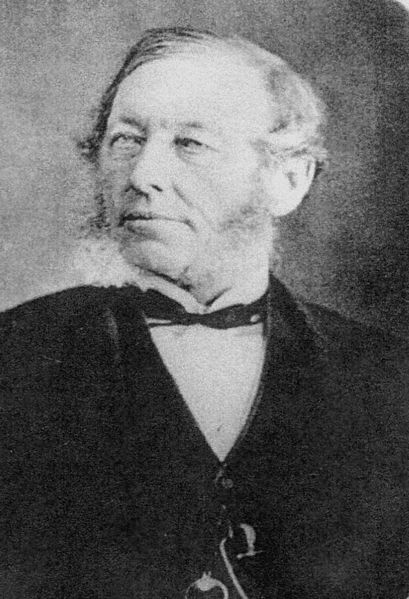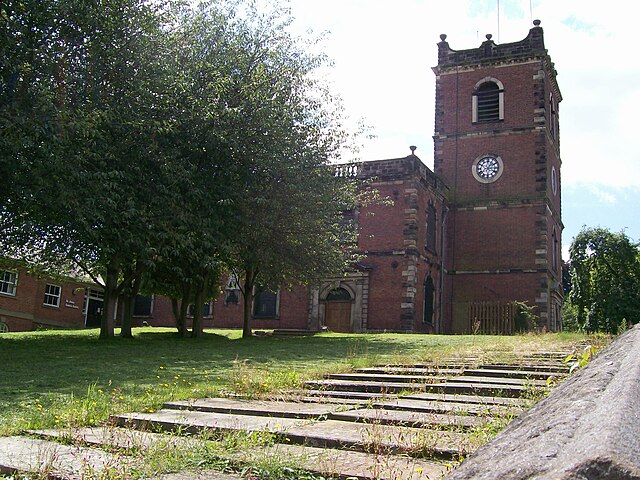Edmund Sharpe was an English architect, architectural historian, railway engineer, and sanitary reformer. Born in Knutsford, Cheshire, he was educated first by his parents and then at schools locally and in Runcorn, Greenwich and Sedbergh. Following his graduation from Cambridge University he was awarded a travelling scholarship, enabling him to study architecture in Germany and southern France. In 1835 he established an architectural practice in Lancaster, initially working on his own. In 1845 he entered into partnership with Edward Paley, one of his pupils. Sharpe's main focus was on churches, and he was a pioneer in the use of terracotta as a structural material in church building, designing what were known as "pot" churches, the first of which was St Stephen and All Martyrs' Church, Lever Bridge.
Sharpe, c. 1860
William Whewell, Professor of Mineralogy when Sharpe was studying at Cambridge
St Mark's Church, Witton, one of Sharpe's earliest churches
St Michael's Church, Kirkham showing Sharpe's steeple
Knutsford is a market town in Cheshire, England; it is located 14 miles (23 km) south-west of Manchester, 9 miles (14 km) north-west of Macclesfield and 12+1⁄2 miles (20 km) south-east of Warrington. The population at the 2011 Census was 13,191.
Knutsford Town Hall
Knutsford motorway service station
St John the Baptist's Church
A resident of the town sanding the street in celebration of May Day 1920. The custom continues to this day.








